IBM and the Holocaust
description: book by investigative journalist Edwin Black
16 results
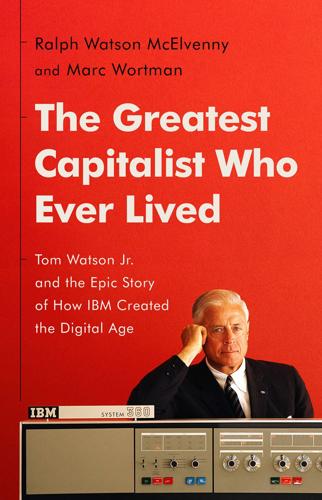
The Greatest Capitalist Who Ever Lived: Tom Watson Jr. And the Epic Story of How IBM Created the Digital Age
by
Ralph Watson McElvenny
and
Marc Wortman
Published 14 Oct 2023
Spee, “IBM and Germany 1922–1941,” Organization Management Journal 5, no. 4 (2008): 208–213. 11. Translation, in Black, IBM and the Holocaust. 12. Longerich, Hitler: A Biography, 447–452. 13. Friedrich W. Kistermann, “Locating the Victims: The Nonrole of Punched Card Technology and Census Work,” IEEE Annals of the History of Computing 19, no. 2: 31–45. 14. Black, IBM and the Holocaust, 59. 15. Kistermann, “Locating the Victims”; see also “Locating the Victims,” Holocaust Encyclopedia, United States Holocaust Memorial Museum, https://encyclopedia.ushmm.org/content/en/article/locating-the-victims. 16. Black, IBM and the Holocaust, 103. 17. Kistermann, “Locating the Victims,” 42, 37. 18.
…
Watson Jr., Father, Son & Co.: My Life at IBM and Beyond (New York: Bantam Books, 1990), 53–56; Thomas J. Watson Jr., conversations with Ralph W. McElvenny. 6. Edwin Black, IBM and the Holocaust: The Strategic Alliance Between Nazi Germany and America’s Most Powerful Corporation, expanded paperback ed. (New York: Crown Publishers, 2012). 7. See Gabriel Schoenfeld, “The Punch-Card Conspiracy,” review of IBM and the Holocaust, by Edwin Black, New York Times, May 18, 2001. 8. Martin Gilbert, The Holocaust: A History of the Jews of Europe During the Second World War (New York: Holt, Rinehart and Winston, 1985); Raul Hilberg, The Destruction of the European Jews, 3rd ed.
…
Kistermann, “Locating the Victims,” 42, 37. 18. Michael Allen, “Stranger than Science Fiction: Edwin Black, IBM, and the Holocaust,” review of IBM and the Holocaust, by Edwin Black, Technology and Culture 43, no. 1 (2002): 150–154. 19. “Salute for Hitler at Trade Congress,” New York Times, June 29, 1937. 20. Maney, Maverick, 203–208. Maney incorrectly claims that Schacht bestowed the medal on Watson at an elaborate party thrown for the ICC delegations by propaganda minister Joseph Goebbels. However, news reports at the time and photographs show the award was made at the Reichsbank. “Thomas J. Watson Is Decorated by Hitler for Work in Bettering Economic Relations,” New York Times, July 2, 1937; see also “Hjalmar Schacht, Frederik van Vlissingen, Thomas Watson, Abraham Frowein and Pierre Vasseur, 1937,” Süddeutsche Zeitung Photo / Alamy Stock Photo, image ID C456KA. 21.
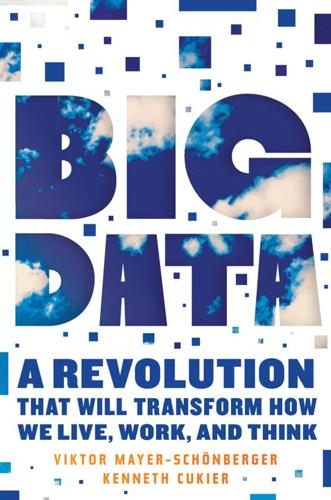
Big Data: A Revolution That Will Transform How We Live, Work, and Think
by
Viktor Mayer-Schonberger
and
Kenneth Cukier
Published 5 Mar 2013
Census Bureau Gave Up Names of Japanese-Americans in WW II,” Scientific American, March 30, 2007 (http://www.scientificamerican.com/article.cfm?id=confirmed-the-us-census-b). On data used by Nazis in the Netherlands—William Seltzer and Margo Anderson, “The Dark Side of Numbers: The Role of Population Data Systems in Human Rights Abuses,” Social Research 68 (2001), pp. 481–513. [>] On IBM and the Holocaust—Edwin Black, IBM and the Holocaust (Crown, 2003). On the amount of data smart meters collect—See Elias Leake Quinn, “Smart Metering and Privacy: Existing Law and Competing Policies; A Report for the Colorado Public Utility Commission,” Spring 2009 (http://www.w4ar.com/Danger_of_Smart_Meters_Colorado_Report.pdf).
…
“The Candide System for Machine Translation.” Proceedings of the 1994 ARPA Workshop on Human Language Technology (1994) (http://aclweb.org/anthology-new/H/H94/H94-1100.pdf). Berk, Richard. “The Role of Race in Forecasts of Violent Crime.” Race and Social Problems 1 (2009), pp. 231–242. Black, Edwin. IBM and the Holocaust. Crown, 2003. boyd, danah, and Kate Crawford. “Six Provocations for Big Data.” Research paper presented at Oxford Internet Institute’s “A Decade in Internet Time: Symposium on the Dynamics of the Internet and Society,” September 21, 2011 (http://ssrn.com/abstract=1926431). Brown, Brad, Michael Chui, and James Manyika.
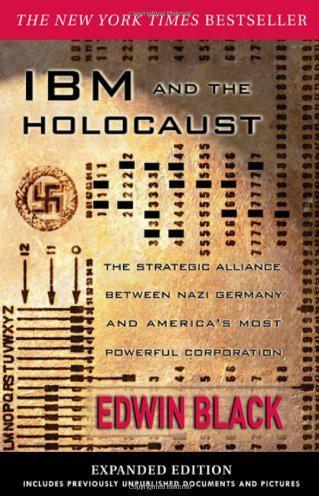
IBM and the Holocaust
by
Edwin Black
Published 30 Jun 2001
IBM AND THE HOLOCAUST THE STRATEGIC ALLIANCE BETWEEN NAZI GERMANY AND AMERICA’S MOST POWERFUL CORPORATION * * * CROWN PUBLISHERS NEW YORK CONTENTS Cover Page Title Page Acknowledgments Introduction PART ONE I NUMBERED PEOPLE II THE IBM-HITLER INTERSECTION III IDENTIFYING THE JEWS IV THE IBM-NAZI ALLIANCE V A NAZI MEDAL FOR WATSON PART TWO VI WAR CARDS VII DEADLY COUNT VIII WITH BLITZKRIEG EFFICIENCY IX THE DEHOMAG REVOLT PART THREE X THE STRUGGLE TO STAY IN THE AXIS XI FRANCE AND HOLLAND XII IBM AND THE WAR XIII EXTERMINATION XIV THE SPOILS OF GENOCIDE, I XV THE SPOILS OF GENOCIDE, II Notes Copyright Page A Dehomag (IBM’s German subsidiary) poster, circa 1934.
…
Without their courage and stamina, it simply could not have been done. Assembling the facts was ironically only half the struggle. Publishing those facts took a historic bravery and literary fearlessness that many lacked. At the head of the line is Philip Turner, formerly of Times Books, who acquired IBM and the Holocaust for Random House. Then, for almost eight months, I was closely supported—hour to hour—by Crown vice president and senior editor Douglas Pepper, who bonded with the text and the mission to boldly tell this unknown story to the world. During the past thirty years of investigative reporting and publishing, I have learned to quickly identify the genuine pros.
…
The Holocaust would have proceeded—and often did proceed—with simple bullets, death marches, and massacres based on pen and paper persecution. But there is reason to examine the fantastical numbers Hitler achieved in murdering so many millions so swiftly, and identify the crucial role of automation and technology. Accountability is needed. What made me demand answers to the unasked questions about IBM and the Holocaust? I confronted the reality of IBM’s involvement one day in 1993 in Washington at the United States Holocaust Museum. There, in the very first exhibit, an IBM Hollerith D-11 card sorting machine—riddled with circuits, slots, and wires—was prominently displayed. Clearly affixed to the machine’s front panel glistened an IBM nameplate.
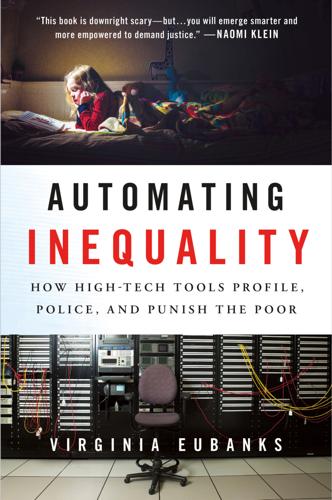
Automating Inequality
by
Virginia Eubanks
But the moral calculus of the digital poorhouse individualizes risk and shreds social commitment. * * * It would stand us all in good stead to remember that infatuation with high-tech social sorting emerges most aggressively in countries riven by severe inequality and governed by totalitarians. As Edwin Black reports in IBM and the Holocaust, thousands of Hollerith punch card systems—an early version of computer software—allowed the Nazi regime to more efficiently identify, track, and exploit Jews and other targeted populations. The appalling reality is that the serial numbers tattooed onto the forearms of inmates at Auschwitz began as punch card identification numbers.
…
I found crucial historical context in the Records of the Department of Public Welfare, especially Series RG-23: Boxes 8-1618 Carton 26 (Administrative Correspondence), 8–1638 Carton 61 (Interdepartmental Correspondence), 8–1628 Carton 54 (Interdepartmental Correspondence), and 8-1635 Carton 58 (Interdepartmental Correspondence). 5. THE DIGITAL POORHOUSE Published Literature Automating Apartheid: U.S. Computer Exports to South Africa and the Arms Embargo. Philadelphia: NARMIC/American Friends Service Committee, 1984. Black, Edwin. IBM and the Holocaust: The Strategic Alliance between Nazi Germany and America’s Most Powerful Corporation. New York: Crown Publishers, 2001. Brennan, William J. “Reason, Passion, and ‘the Progress of the Law.’” Cardozo Law Review 3 (1988): 3–23. Cohen, Adam. Imbeciles: The Supreme Court, American Eugenics, and the Sterilization of Carrie Buck.

Tower of Basel: The Shadowy History of the Secret Bank That Runs the World
by
Adam Lebor
Published 28 May 2013
Available online at http://www.lib.udel.edu/ud/spec/findaids/html/mss0109.html. 29. Op. cit. 30. “Thomas J. Watson Is Decorated by Hitler,” New York Times, July 2, 1937. 31. Christopher Simpson, The Splendid Blond Beast: Money, Law, And Genocide in the Twentieth Century (Monroe, ME: Common Courage Press, 1995), 73. 32. Edwin Black, IBM and the Holocaust: The Strategic Alliance Between Nazi Germany and America’s Most Powerful Corporation (Westport, CT: Dialogue Press, 2008). 33. Messersmith to Geist, December 8, 1938. Special Collections Department, University of Delaware Library. Available at http://www.lib.udel.edu/ud/spec/findaids/html/mss0109.html. 34.
…
Billstein, Reinhold, Karola Fings, Anita, Kugler, and Nicholas Levis. Working for the Enemy: Ford, General Motors and Forced Labor During the Second World War. Oxford, New York: Berghahn Books, 2004. Bird, Kai. The Chairman: John J. McCloy and the Making of the American Establishment. New York: Simon and Schuster, 1992. Black, Edwin. IBM and the Holocaust: The Strategic Alliance between Nazi Germany and America’s Most Powerful Corporation. Westport, CT: Dialogue Press, 2012. Borkin, Joseph. The Crime and Punishment of I. G. Farben. New York: Free Press, 1978. Boughton, James M. Silent Revolution: The International Monetary Fund 1979–1989.

Hacking Capitalism
by
Söderberg, Johan; Söderberg, Johan;
In “The DotCommunism Manifesto” Eben Moglen directly paraphrases Karl Marx’s manifesto.emoglen.law.columbia.edu/publications/dcm.html (accessed 2007-02-08). 14. “Gates Taking a Seat in Your Den” CNetNews.com (January 5, 2005). 15. For a less cosy account of IBM’s political legacy, see Edwin Black, IBM and the Holocaust: The Strategic Alliance Between Nazi Germany and America’s Most Powerful Corporation (London: Little, Brown & co, 2001). IBM’s modern-day political stand can be read out from their donations to George Bush’s presidential election campaign in 2000 and 2004, hardly an administration associated with the old hippie slogan. 16.
…
Bettig, Roland, Copyrighting Culture—the Political Economy of Intellectual Property, Boulder, CO: Westview Press, 1996. Biegel, Stuart. Beyond Our Control? Confronting the Limits of Our Legal System in the Age of Cyberspace, Cambridge Mass., MIT Press, 2003. Bijker, Wiebe. Of Bicycles, Bakelites, and Bulbs—Towards a Theory of Sociotechnical Change, Cambridge, Mass.: MIT Press, 1995. Black, Edwin, IBM and the Holocaust: The Strategic Alliance Between Nazi Germany and America’s Most Powerful Corporation, London: Little, Brown & co, 2001. Bollier, David. Silent Theft—The Private Plunder of Our Common Wealth, London: Routledge, 2003. ed. Bonefeld, Werner, and Richard Gunn and Kosmas Psychopedis. Open Marxism, vol.I, London: Pluto Press, 1992. ——— Open Marxism, vol.II, London: Pluto Press, 1992.

Surveillance Valley: The Rise of the Military-Digital Complex
by
Yasha Levine
Published 6 Feb 2018
Every military and labor column existed first as a column of numbers. Every act of extermination was preceded by an act of registration; selection on paper ended with selection on the ramps.” Götz Aly and Karl Heinz Roth, The Nazi Census: Identification and Control in the Third Reich (Philadelphia: Temple University Press, 2004). 51. Edwin Black, IBM and the Holocaust: The Strategic Alliance between Nazi Germany and America’s Most Powerful Corporation (New York: Crown, 2001). 52. Robert Sproull, former director of ARPA, stated in an interview that, although ARPA’s command and control project did not originate in Project Agile, it overlapped with ARPA’s counterinsurgency mission and “may have had some origins.”
…
In another poll a few years later, 68 percent believed current privacy laws did not do enough to protect people online (Lee Rainie, Sara Kiesler, Ruogu Kang, and Mary Madden, “Anonymity, Privacy, and Security Online,” Pew Research Center, September 5, 2013, http://www.pewinternet.org/2013/09/05 /anonymity-privacy-and-security-online/). Epilogue 1. D. M. Luebke and S. Milton, “Locating the Victim: An Overview of Census-Taking, Tabulation Technology and Persecution in Nazi Germany,” IEEE Annals of the History of Computing 16, no. 3 (Autumn/Fall 1994): 35. 2. Edwin Black, IBM and the Holocaust: The Strategic Alliance between Nazi Germany and America’s Most Powerful Corporation (New York: Crown, 2001). 3. Götz Aly and Karl Heinz Roth, The Nazi Census: Identification and Control in the Third Reich (Philadelphia: Temple University Press, 2004). 4. Stephen Wolff, telephone interview with author, October 23, 2015 Index Advanced Network Services, 122 advertising and marketing Apple’s “1984” ad, 115–116 Facebook, 170 Google’s targeted advertising system, 5, 152–153, 159–161 Internet revolution as liberating technology, 6 political campaigns, 170–171 public relations response to Sputnik launch, 16–17 AdWords, 152–153 Afghanistan: WikiLeaks data, 243 African Americans.
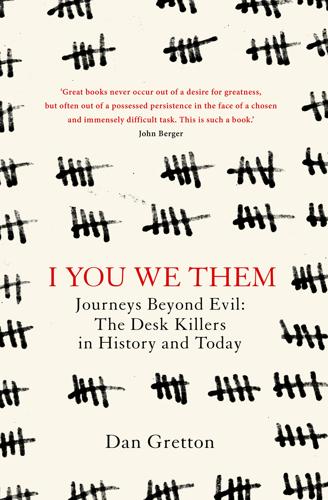
I You We Them
by
Dan Gretton
This is the only time in the whole meeting when Hitler is invoked directly, and it is the first recorded mention we have of the move away from expelling the Jews to ‘evacuation to the east’, which was to become a common, and chilling, euphemism for the establishment of the extermination camps in Poland and the setting up of the extensive transport and personnel infrastructures necessary for mass killing. Next Heydrich gives the detailed breakdown of the figures Eichmann had prepared for the meeting concerning the total number of Jews to be taken into consideration in this ‘Final Solution’ – some 11 million. We know from Edwin Black’s work IBM and the Holocaust that the Nazis had used the most advanced information-gathering techniques on their opponents since coming to power in 1933. This includedthe now infamous Hollerith tabulating machine (an early kind of quasi-computer that used punch-card technology), which had been pioneered by IBM in the 1920s.
…
And finally, we see a growing understanding of the part that international corporations played in the Holocaust – the significant responsibility of Swiss banks, the role of Austrian, Italian and French banks and insurers, and then, in 1998, the news emerged that Ford were going to be prosecuted for the fact that its subsidiary factory in Cologne had manufactured trucks for the Nazi war effort, and profited from the use of slave labour. In 2001 Edwin Black published his explosive work IBM and the Holocaust: The Strategic Alliance between Nazi Germany and America’s Most Powerful Corporation, which showed that IBM’s Hollerith machine, created by their German subsidiary company Dehomag, had played a central role in Nazi Germany’s ability to gather information on Jews, Roma, Sinti and political opponents – information-gathering which had directly aided the organisation of the Holocaust, as we’ve seen in looking at the Wannsee Conference.
…
The publication of Black’s book in 2001 played a contributory role in two legal actions against IBM, in 2001 and 2004, and an eventual payment of $3 million by IBM’s German division into a German fund for Holocaust survivors. * Why had it taken more than fifty years for such a work to emerge? To get from The Diary of Anne Frank to IBM and the Holocaust? To move from focussing on individual perpetrators like Himmler to judging the responsibility of entire sectors of business such as banking? Much can be explained by the human tendency to see events through the prism of a person’s life. But perhaps there is also something in the scale of research needed when looking into entire corporations, whole sectors of industry, which defeats not only our imaginations, but our best intentions and efforts.
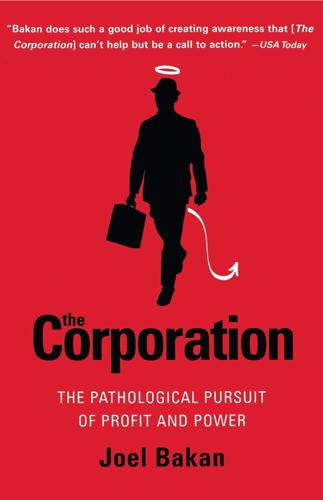
The Corporation: The Pathological Pursuit of Profit and Power
by
Joel Bakan
Published 1 Jan 2003
Snell, "American Ground Transport: A Proposal for Restructuring the Automobile, Truck, Bus and Rail Industries," report presented to the Committee of the Judiciary, Subcommittee on Antitrust and Monopoly, United States Senate, February 26, 1974 (Washington, D.C.: U.S. Government Printing Office, 1974), 16-24; Michael Dobbs, "Ford and GM Scrutinized for Alleged Nazi Collaboration," The Washington Post, November 30, 1998. 5. Interview with Edwin Black. Also see Edwin Black, IBM and the Holocaust: The Strategic Alliance Between Nazi Germany and America's Most Powerful Corporation (New York: Crown Publishers, 2001). 6. Interviews with Edwin Black and Peter Drucker. Quotes from Dobbs, "Ford and GM Scrutinized," who reports as follows: "Less than three weeks after the Nazi occupation of Czechoslovakia in March 1939, GM Chairman Alfred P.
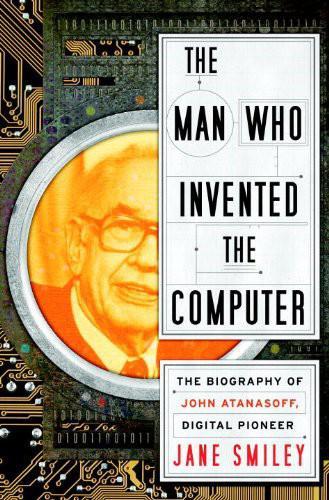
The Man Who Invented the Computer
by
Jane Smiley
Published 18 Oct 2010
Since Call had Atanasoff’s letters and documents, all of which corroborated an entirely different story, Call knew that such a defense would hurt Sperry’s case, whatever Mauchly’s motives. Whether he remembered what had really happened and was banking on Atanasoff not retaining the documents, or whether he actually had no memory of his response to the ABC, he would be seriously compromised either way. 1. For more information about this connection, see Edwin Black’s IBM and the Holocaust: The Strategic Alliance Between Nazi Germany and America’s Most Powerful Corporation (New York: Crown, 2001). 2. The Whirlwind was another offspring of ENIAC. A man named Perry Crawford was working at MIT, trying to create computerized flight simulators for the navy. They were using analog ideas before Crawford saw ENIAC in 1945.
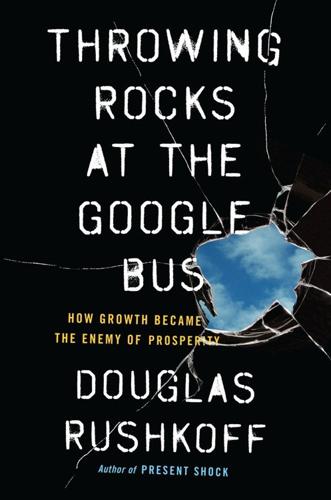
Throwing Rocks at the Google Bus: How Growth Became the Enemy of Prosperity
by
Douglas Rushkoff
Published 1 Mar 2016
Protecting Pensions:Policy Analysis and Examples from OECD Countries, no. 8, Paris: OECD Publications, 2007. Books Antonopoulos, Andreas M. Mastering Bitcoin: Unlocking Digital Cryptocurrencies. Sebastopol, Calif. O’Reilly Media, 2014. Belloc, Hillaire. TheServile State. CreateSpace Independent Publishing Platform, 2008. Black, Edwin. IBM and the Holocaust. New York: Crown Publishers, 2001. Bolier, David. Think Like a Commoner: A Short Introduction to the Life of the Commons. Vancouver: New Society Publishers, 2014. Braudel, Fernand. Civilization and Capitalism, 15th–18th Century, vol. 1: The Structure of Everyday Life. New York: Harper & Row, 1982.
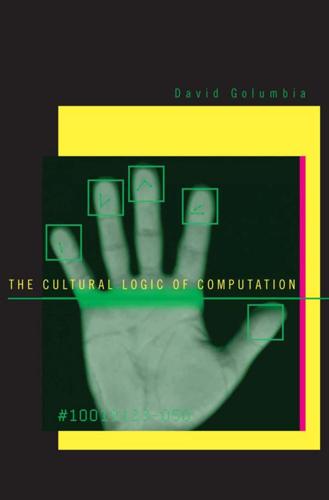
The Cultural Logic of Computation
by
David Golumbia
Published 31 Mar 2009
Cambridge, MA: The MIT Press. Biber, Douglas, Susan Conrad, and Randi Reppen. 1998. Corpus Linguistics: Investigating Language Structure and Use. New York: Cambridge University Press. Birkerts, Sven. 1994. The Gutenberg Elegies: The Fate of Reading in an Electronic Age. New York: Ballantine. Black, Edwin. 2002. IBM and the Holocaust: The Strategic Alliance Between Nazi Germany and America’s Most Powerful Corporation. New York: Three Rivers Press. References p 235 Block, Ned. 1990. “The Computer Model of the Mind.” In Daniel N. Osherson and Edward E. Smith, eds., Thinking: An Invitation to Cognitive Science, Volume 3.

Radical Technologies: The Design of Everyday Life
by
Adam Greenfield
Published 29 May 2017
., “Growth, Innovation, Scaling, and the Pace of Life in Cities,” Proceedings of the National Academy of Sciences, Volume 104, Number 17, April 24, 2007, pp. 7301–6. 42.Flood, ibid. 43.See Amazon’s interview with Fires author Joe Flood: amazon.com/Fires-Computer-Intentions-City---Determined/dp/1594485062/ref=sr_1_1?s=books&ie=UTF8&qid=1376668689&sr=1-1. 44.Edwin Black, IBM and the Holocaust: The Strategic Alliance between Nazi Germany and America’s Most Powerful Corporation, New York: Crown Books, 2001. 45.Raul Hilberg, The Destruction of the European Jews, New Haven: Yale University Press, 2003. 46.Jasmina Tešanović, “Seven Ways of IoWT,” IoWT blog, April 27, 2016, internetofwomenthings.tumblr.com/post/143491446241/seven-ways-of-iowt. 3Augmented reality 1.County10 News.

Your Computer Is on Fire
by
Thomas S. Mullaney
,
Benjamin Peters
,
Mar Hicks
and
Kavita Philip
Published 9 Mar 2021
Margot Lee Shetterly, Hidden Figures: The American Dream and the Untold Story of the Black Women Mathematicians Who Helped Win the Space Race (New York: William Morrow, 2016). 9. Meredith Broussard, Artificial Unintelligence: How Computers Misunderstand the World (Cambridge, MA: MIT Press, 2018). 10. Edwin Black, IBM and the Holocaust (New York: Crown Books, 2001), and Clyde W. Ford, Think Black: A Memoir (New York: Amistad, 2019). 11. Simone Browne, Dark Matters: On the Surveillance of Blackness (Durham, NC: Duke, 2015). See also Ruha Benjamin, Race after Technology (New York: Polity, 2019). 12. Clyde W. Ford, Think Black: A Memoir (New York: Amistad, 2019). 13.
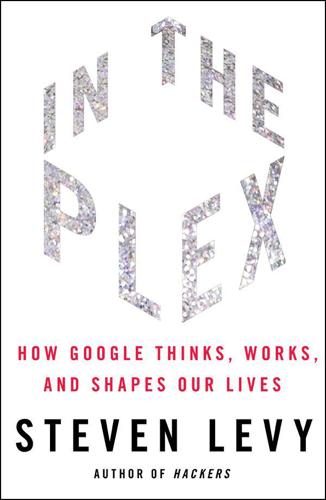
In the Plex: How Google Thinks, Works, and Shapes Our Lives
by
Steven Levy
Published 12 Apr 2011
Reporters were approached by a stream of people from various human rights groups distributing leaflets and reports documenting the misguided or just plain immoral cooperation that these companies were lending to the regime that had murdered its citizens in Tiananmen Square. (By the end of the day there were enough pages to fill a Russian novel.) Less than five minutes after calling the session to order, Chris Smith was praising a recent book entitled IBM and the Holocaust, which had documented with devastating detail how Big Blue had sold the Germans technology that had allowed them to murder 6 million Jews and other targets more efficiently, including Tom Lantos’s family. “U.S. technology companies today are engaged in a similar sickening collaboration,” Smith said.
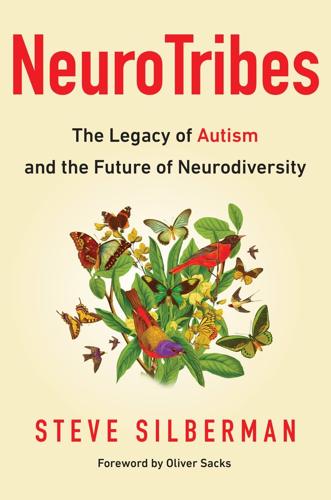
NeuroTribes: The Legacy of Autism and the Future of Neurodiversity
by
Steve Silberman
Published 24 Aug 2015
“We will not allow ourselves to be turned into niggers”: Unmasked: Two Confidential Interviews with Hitler, Edouard Calic. Translated by R. H. Barry. Chatto & Windus, 1971. In July 1933: Law for the Prevention of Hereditarily Diseased Offspring. Enacted on July 14, 1933. Reichsdruckerei, 1935. The law also mandated the creation of Genetic Health Courts: IBM and the Holocaust, Edwin Black. Crown, 2001. more than four hundred thousand men, women, and children: Racial Hygiene: Medicine under the Nazis, Robert Proctor. Harvard University Press, 1988. “An entire people goes in a single direction”: “Hans Asperger: His Life and Work.” “talk about autistic!”